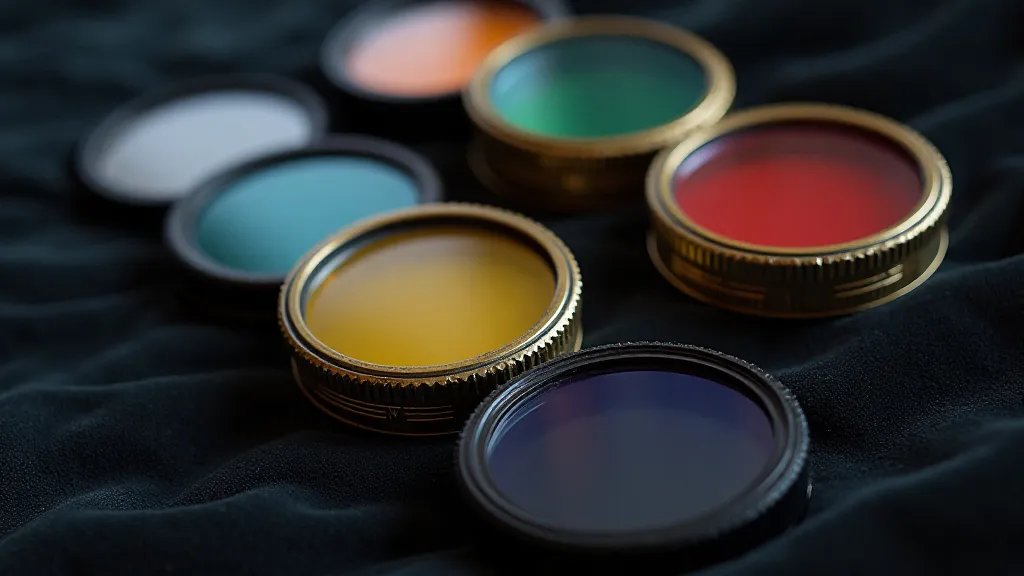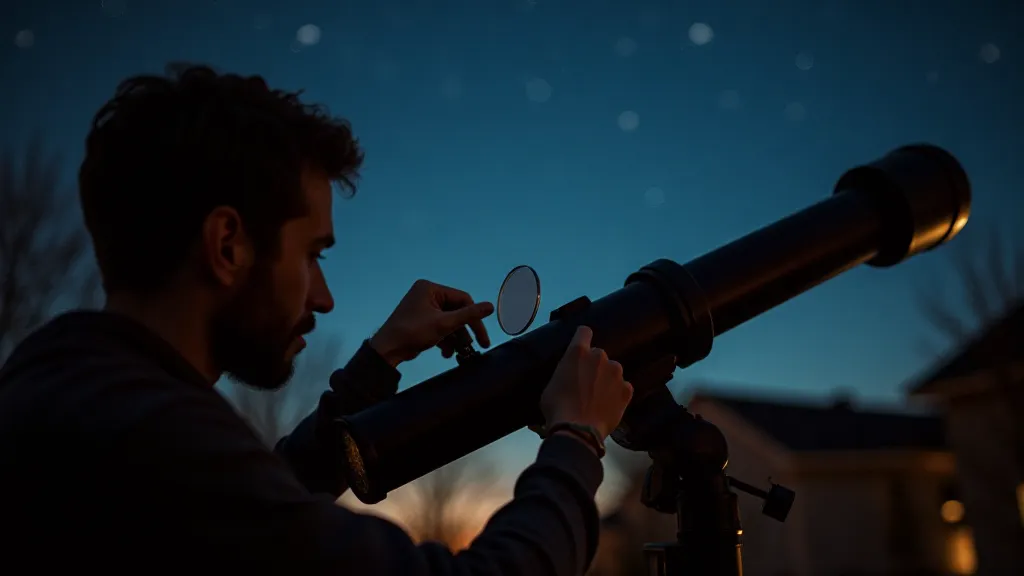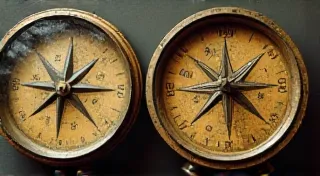The Dance of Filters: Unveiling the Invisible Universe
There's a certain poetry to observing the cosmos, a quiet reverence born from peering into the vastness of space. It’s a feeling not unlike the quiet contemplation one experiences when holding an antique accordion. Each button, each bellows, tells a story of craftsmanship, of a musician's passion, and of a time when complex machinery was a marvel of ingenuity. Just as the accordion reveals musical nuances otherwise lost, so too do filters for telescopes unveil aspects of the universe hidden from our naked eyes.
For generations, amateur astronomers have relied on the simple act of looking up. And that’s a wonderfully valid way to connect with the night sky. But even with the clearest, darkest skies, much of what lies beyond is invisible – not because it isn't *there*, but because it’s emitting light at wavelengths our eyes aren’t sensitive to. This is where filters come in, acting as selective windows, isolating specific colors of light and revealing details previously veiled in darkness. It's a technique that subtly blends artistry and science, much like the meticulous restoration of a vintage accordion, bringing a silent instrument back to life.

The Electromagnetic Spectrum and Our Limited View
To understand filters, we first need to appreciate the electromagnetic spectrum. It’s a continuum of energy, ranging from radio waves to gamma rays. Visible light is just a tiny sliver of this vast spectrum – the portion our eyes can perceive. Beyond the visible spectrum lie ultraviolet (UV), infrared (IR), and other wavelengths, each carrying information about celestial objects. A nebula might appear red in visible light, but a specific infrared filter might reveal previously unseen structures within its dust clouds. Similarly, a planet's atmosphere might appear featureless through a green filter, while a narrowband hydrogen-alpha (Hα) filter might highlight regions of ionized hydrogen gas, pinpointing active star-forming areas. The amount of light gathered is intrinsically linked to the detail observable; understanding the concepts behind aperture's embrace becomes crucial to maximizing your observations.
The first astronomers, relying solely on visual observations, were remarkably resourceful. They cataloged thousands of stars and planets, developing sophisticated techniques for tracking and measuring their movements. But their view was fundamentally limited. The introduction of photography in the 19th century revolutionized astronomy, allowing for the capture of fainter objects and the detection of wavelengths beyond the visible spectrum. Early photographic plates were incredibly sensitive, but also prone to scattering and unwanted light. This is where early filter experimentation began – initially, simple colored glass to block out unwanted light pollution. Today, filters are a far more nuanced and technologically advanced affair.
Types of Filters and Their Uses
The world of astronomical filters can seem daunting at first, but the basic categories are quite manageable. Here's a breakdown of common types and their primary applications:
- Light Pollution Filters: These filters, often a dark blue or green hue, are essential for observers in areas with significant light pollution. They block out common wavelengths of artificial light (sodium and mercury vapor) while allowing more celestial light to pass through. While they won't magically transform a heavily polluted sky into a pristine dark site, they can significantly improve contrast.
- Color Filters (RGB): Red, green, and blue filters are used to enhance planetary observations. Different wavelengths are scattered and reflected differently by planetary atmospheres, and these filters can help bring out subtle surface details.
- Narrowband Filters (Hα, OIII, SII): These filters isolate extremely narrow bands of light, typically around the wavelengths emitted by ionized hydrogen (Hα), doubly ionized oxygen (OIII), and singly ionized sulfur (SII). They’re invaluable for observing nebulae, particularly emission nebulae where gas is being ionized by nearby stars. The resulting images, often monochrome, can be combined to create stunning false-color representations of these cosmic nurseries.
- Infrared (IR) Filters: These filters allow observation in wavelengths beyond the visible spectrum. They are useful for penetrating dust clouds and observing cooler objects, like brown dwarfs.
- Solar Filters: Absolutely essential for safely observing the Sun. These specialized filters block out nearly all visible light, allowing you to observe sunspots and solar prominences without risking permanent eye damage. Never, ever look at the Sun through a telescope without a proper solar filter.
The careful selection and application of filters is an art form. It’s similar to a skilled accordion player choosing the right reeds and bellows pressure to extract the precise tone and expression from the instrument. A subtle adjustment can dramatically alter the image, revealing hidden features or mitigating unwanted artifacts. It demands patience, experimentation, and a deep understanding of the target object and the filters being used. Some astronomers, particularly those drawn to the elegance of refracting telescopes, are acutely aware of the challenges presented by chromatic aberration's dance, and filters play a crucial role in mitigating these effects and bringing out the full potential of their instruments.

Restoration and Collecting: Echoes of the Past
Just as antique accordions are cherished for their craftsmanship and history, early astronomical filters hold a unique appeal to collectors. Early photographic filters were often made of hand-blown glass, often with subtle imperfections that add to their charm. Finding these rare pieces is akin to uncovering a piece of astronomical history. The care taken in crafting these filters often mirrors the meticulous detail found in the restoration of an antique accordion – a slow, deliberate process requiring specialized knowledge and a deep appreciation for the object's significance. Even the patina of age – the subtle discoloration and imperfections – tells a story of use and time.
The restoration process might involve carefully cleaning the filter glass, repairing any cracks or chips, and replacing any degraded coatings. It's a challenging task, but the reward is the preservation of a piece of astronomical heritage. Some collectors are even interested in researching the history of these filters – tracking their original manufacturers, identifying the telescopes they were used with, and uncovering the observations they contributed to. This is more than just collecting objects; it’s connecting with a legacy of exploration and discovery. The allure of the dark sky, and the deep connection it fosters, is a driving force for many, drawing them to the simplicity and soul of a Dobsonian.
Observing the night sky through a filter isn't merely about gathering data; it's about engaging with the universe on a deeper level. It's about appreciating the interplay of light and matter, and about understanding that what we see is just a tiny fraction of the story. It’s a dance – a delicate collaboration between the observer, the instrument, and the cosmos itself. Much like the musician coaxing a soulful melody from an aging accordion, the amateur astronomer using filters to reveal the secrets of the universe is participating in a timeless tradition of exploration and wonder.

The application of filters, and the techniques employed to maximize their effectiveness, are continually evolving, driven by advancements in materials science and computational imaging. New filter designs are being developed to target specific emission lines with greater precision, and sophisticated algorithms are being used to combine multiple exposures and create high-resolution false-color images. The digital revolution has also transformed the way we process and interpret astronomical data, allowing us to extract even more information from the light captured by our telescopes and filters. This ongoing process of discovery and refinement reflects the enduring human desire to understand our place in the universe, and to explore the wonders that lie beyond our reach.





